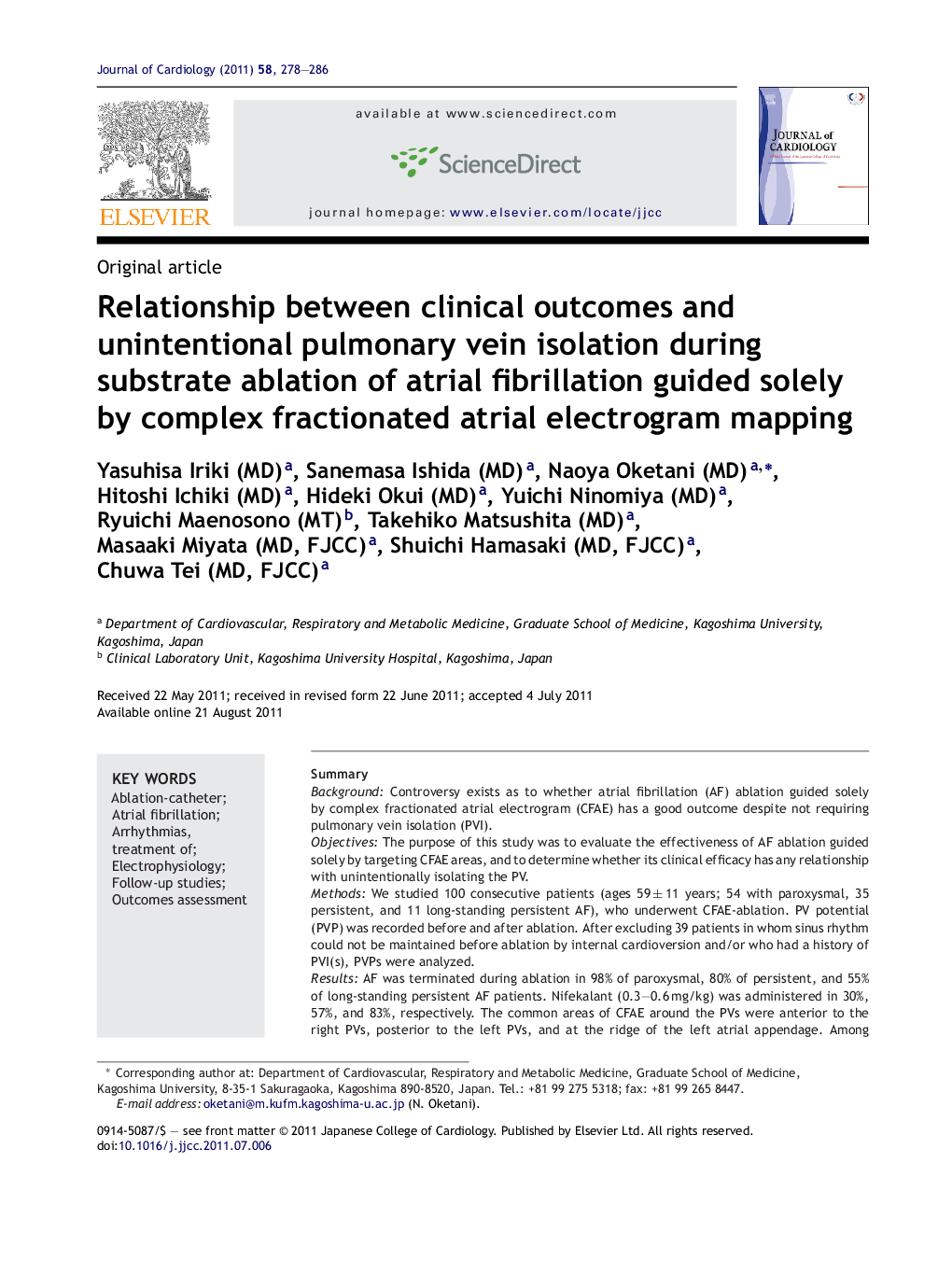| Article ID | Journal | Published Year | Pages | File Type |
|---|---|---|---|---|
| 2963340 | Journal of Cardiology | 2011 | 9 Pages |
SummaryBackgroundControversy exists as to whether atrial fibrillation (AF) ablation guided solely by complex fractionated atrial electrogram (CFAE) has a good outcome despite not requiring pulmonary vein isolation (PVI).ObjectivesThe purpose of this study was to evaluate the effectiveness of AF ablation guided solely by targeting CFAE areas, and to determine whether its clinical efficacy has any relationship with unintentionally isolating the PV.MethodsWe studied 100 consecutive patients (ages 59 ± 11 years; 54 with paroxysmal, 35 persistent, and 11 long-standing persistent AF), who underwent CFAE-ablation. PV potential (PVP) was recorded before and after ablation. After excluding 39 patients in whom sinus rhythm could not be maintained before ablation by internal cardioversion and/or who had a history of PVI(s), PVPs were analyzed.ResultsAF was terminated during ablation in 98% of paroxysmal, 80% of persistent, and 55% of long-standing persistent AF patients. Nifekalant (0.3–0.6 mg/kg) was administered in 30%, 57%, and 83%, respectively. The common areas of CFAE around the PVs were anterior to the right PVs, posterior to the left PVs, and at the ridge of the left atrial appendage. Among 215 PVs in 61 patients (42 paroxysmal, 19 persistent), only 17 PVs (8%) were unintentionally isolated. The atrial potential to PVP was prolonged (>30 ms) in 13% of PVs. After at least 12 months of follow-up (23 ± 5 months), 65% of paroxysmal (11% with drug), 54% of persistent (37% with drug), and 45% of long-standing (60% with drug) AF patients were free from atrial arrhythmia after one session.ConclusionsCFAE-ablation terminates AF without isolating PVs in a high percentage of patients, and yields excellent clinical outcomes.
